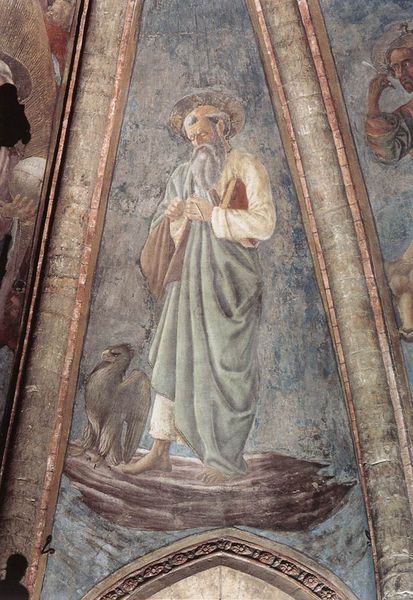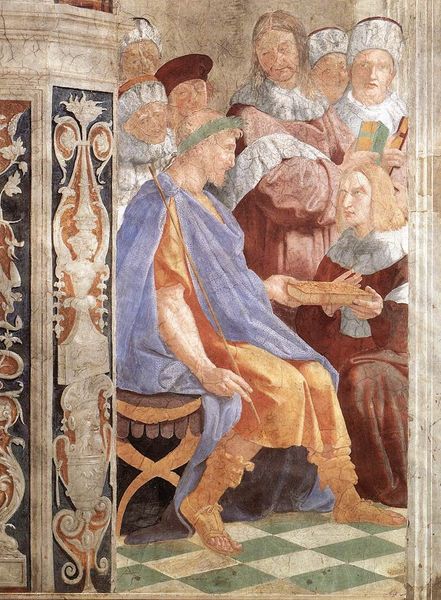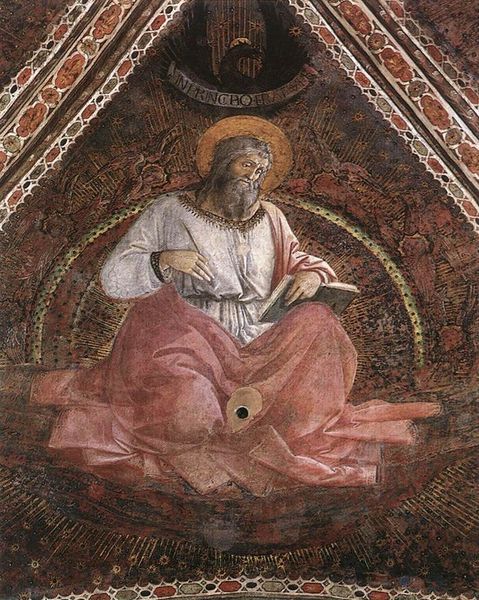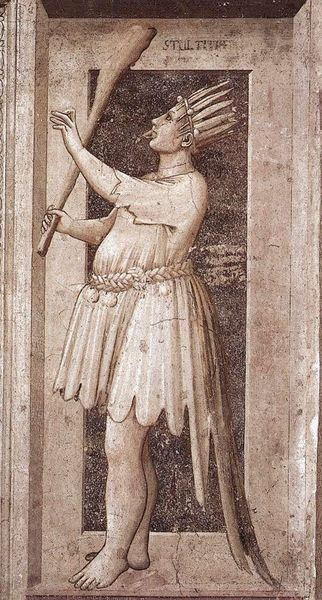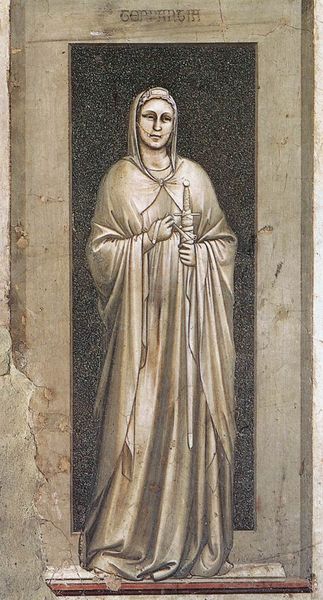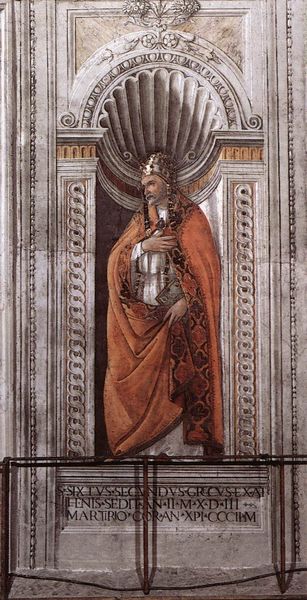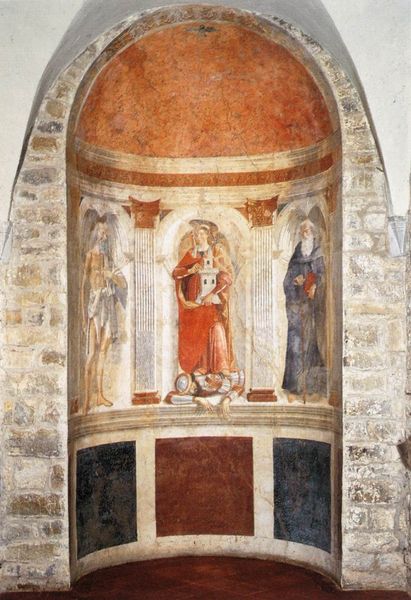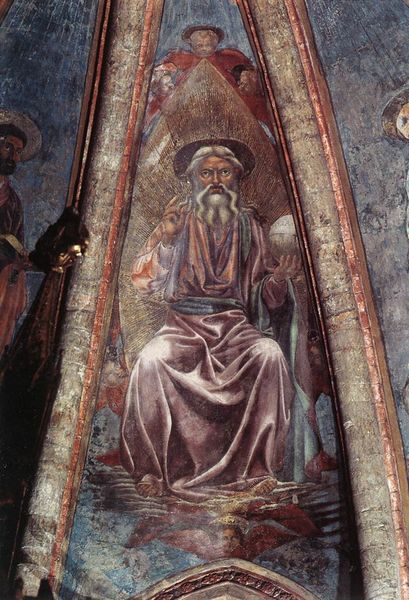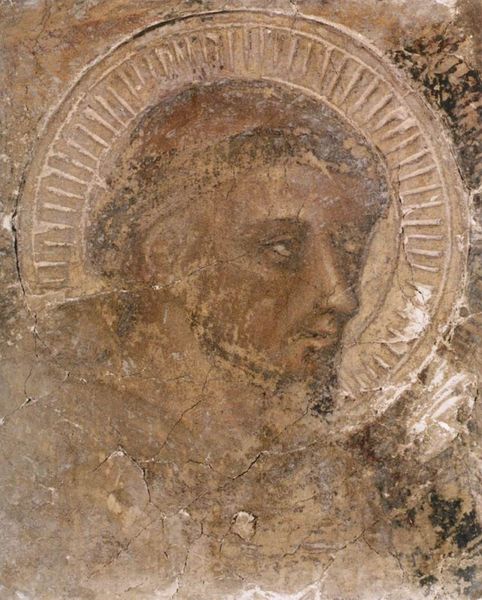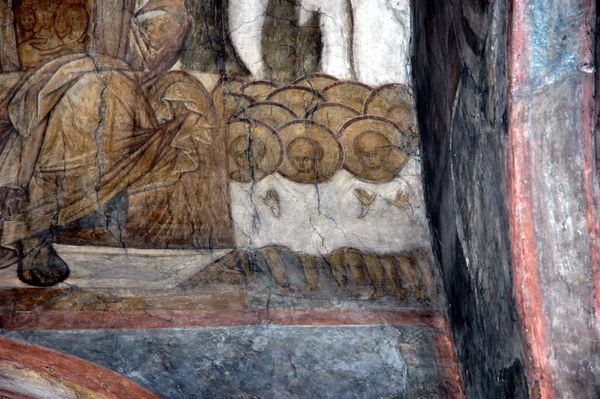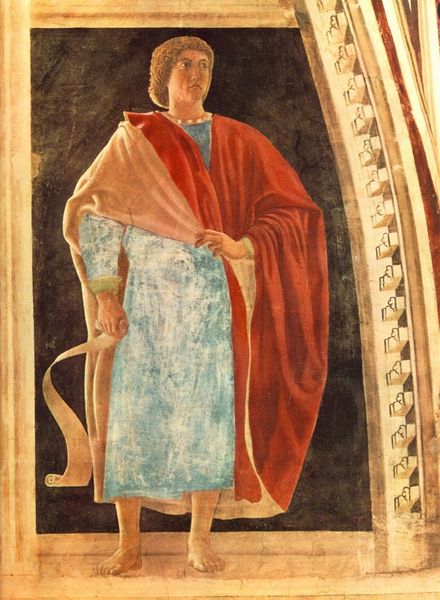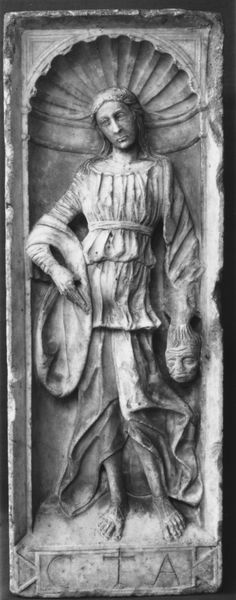
carving, painting, fresco
#
portrait
#
carving
#
narrative-art
#
painting
#
sculpture
#
holy-places
#
sculptural image
#
figuration
#
fresco
#
christianity
#
history-painting
#
academic-art
#
italian-renaissance
Copyright: Public domain
Curator: Standing before us is Andrea del Castagno’s fresco, *St. John the Baptist*, completed around 1442. What strikes you most about this figure? Editor: Initially, it’s the palpable sense of solitude and resolve emanating from St. John. He’s partially draped, emerging from what seems like water. The colour palette gives off a sober, even melancholic air. Curator: The work was commissioned during a period of intense socio-political change in Florence. Consider that through civic patronage and these new visual styles, the early Renaissance found new ways of exploring identity and meaning, often drawing inspiration from biblical figures like John. Editor: I see that interplay distinctly. Here’s John, both prophet and marginal figure, rendered with such a powerful realism. Castagno positions him at a fascinating intersection of spiritual authority and social commentary, prompting us to question traditional narratives of power and identity. Note his direct gaze and that powerful hand gesture, so confident. How would such a figure be read by women of the 1440s? Or, by gender non-conforming folks of our day? Curator: Certainly, the political atmosphere, the increasing wealth of Florence's merchant class, the rising influence of humanism… these elements contributed to a society eager to embrace the rediscovery of classical forms and a new focus on individual expression. You find both reflected in his robust, classically influenced physique. The positioning of *St. John* also needs to be understood as functioning as part of a decorative cycle; how do you see the image functioning publicly and politically? Editor: His placement invites dialogue with the architectural space surrounding the image. It suggests a kind of negotiation between sacred and secular spaces. Its original viewers perhaps understood the piece within a constellation of moral and spiritual ideals promoted by the commissioning body, a specific monastic order whose aims surely intersected with the religious-political life of Florence. I see John here as embodying defiance and religious conviction against social norms, his marginalized stance turned into a site of resistance and potential empowerment. Curator: A fascinating perspective on resistance. It highlights the lasting influence of art as a vehicle for expressing individual and collective agency, transcending temporal and societal boundaries. Editor: And perhaps emphasizing how such seemingly fixed identities can shift meanings, encouraging constant interrogation from diverse vantage points.
Comments
No comments
Be the first to comment and join the conversation on the ultimate creative platform.
